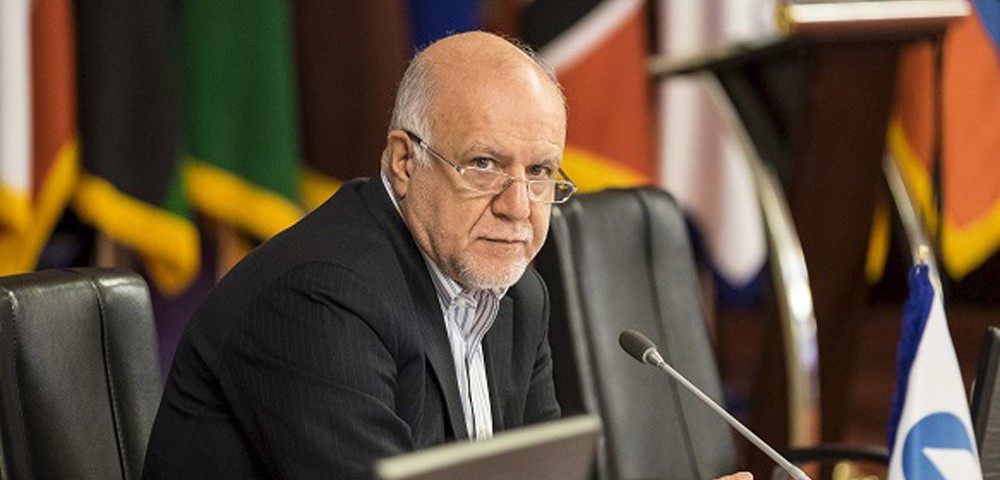
Iran's Oil Minister Predicts $41b in Oil Export Earnings

Iran will earn $41 billion from oil and gas condensate exports by the end of the present fiscal year in March, Oil Minister Bijan Namdar Zanganeh said on Monday.
"The sale of oil and condensates will reach $41 billion by the yearend, but earnings will be lower because part of the dues is normally collected a few months after the shipments," Zanganeh was quoted as saying by Shana, the Oil Ministry's official news service.
Iran sold $29 billion worth of oil and condensate in the first nine months of the present fiscal (Jan.-Dec. 2016), according to ministry data. Zanganeh said $24.7 billion of the amount has been collected.
"We will gross more in oil revenues over the next few months," the minister said, stressing that oil revenues will provide the government with funds for the 2017-18 budget.
Tehran reportedly earned around $25 billion from crude oil export in the previous fiscal.
The budget for the next fiscal is based on $55-per-barrel oil. The OPEC member is counting on higher oil prices through the year on the back of a global pact between members of the Organization of Petroleum Exporting Countries and non-members to curb supplies by 1.8 million per day through the first half of 2017.
OPEC agreed on Nov. 30 to cut output by 1.2 million bpd to 32.5 million bpd for the first six months of 2017, in addition to 558,000 bpd of cuts agreed to by independent producers such as Russia, Oman and Mexico.
Analysts speculate that the deal could be extended for another six months if producers stick to planned cuts. Under the deal, Iran was the only country allowed to raise output from its October production level of 3.7 million bpd.
Tehran on average exported 2.57 million barrels per day of crude oil and condensates in March-Dec., and its December crude sales reached 2.83 million barrels a day, according to Deputy Oil Minister Amirhossein Zamaninia.
Zanganeh also expressed confidence that OPEC and non-OPEC members would commit to the output cut deal agreed in November, noting that prices of oil would rise further as a result.
"I am certain that the OPEC and non-OPEC members will cut oil output as pldged. This will remove the oil surplus from the market, balance demand and supply, and lift prices," Zanganeh noted.

December crude sales reached 2.83 million barrels a day.
Turkmen Gas Dispute
Asked about the gas dispute between Tehran and Ashgabat, Zanganeh said the National Iranian Gas Company has been assigned to settle the issue as "it is basically a commercial agreement" between NIGC and Turkmengaz—the national gas company of Turkmenistan.
Earlier this month, Turkmenistan unilaterally suspended gas supplies to Iran in a hasty decision that was aimed to pressure Tehran to clear its unpaid dues for gas deliveries from Turkmenistan.
Pointing to Iran's policy in maintaining close relations with its neighbors, the official said, "Neither the government nor the Oil Ministry will meddle with the issue. The NIGC is assigned to handle the dispute via a joint commission."
“Iran imported insignificant amount of gas from Turkmenistan,” the minister said, noting that shortage of gas in the winter can be avoided if consumption nationwide is reduced by 10%. Moreover, plans are in place to speed up pipeline-laying operations from the oil and gas-rich southern fields to the north.
Zanganeh stressed that the South Pars Gas Field development projects will be fully implemented by 2018. South Pars meets approximately 68% of the country's daily gas needs.
"During the last three years, seven phases have gone on stream and phases 17, 18, 19, 20 and 21 will be completed by the yearend."
According to the minister, more than $16.5 million was invested for natural gas network expansion in deprived rural areas last year.
Reportedly, 65 million people, or 85% of Iran's population, have access to natural gas. The figure is expected to reach 75 million or 95% by March 2018.


Trump weighs using $2 billion in CHIPS Act funding for critical minerals

Codelco cuts 2025 copper forecast after El Teniente mine collapse

Electra converts debt, launches $30M raise to jumpstart stalled cobalt refinery

Barrick’s Reko Diq in line for $410M ADB backing

Abcourt readies Sleeping Giant mill to pour first gold since 2014

Nevada army depot to serve as base for first US strategic minerals stockpile

SQM boosts lithium supply plans as prices flick higher

Viridis unveils 200Mt initial reserve for Brazil rare earth project

Tailings could meet much of US critical mineral demand – study

Kyrgyzstan kicks off underground gold mining at Kumtor

Kyrgyzstan kicks off underground gold mining at Kumtor

KoBold Metals granted lithium exploration rights in Congo

Freeport Indonesia to wrap up Gresik plant repairs by early September

Energy Fuels soars on Vulcan Elements partnership

Northern Dynasty sticks to proposal in battle to lift Pebble mine veto

Giustra-backed mining firm teams up with informal miners in Colombia

Critical Metals signs agreement to supply rare earth to US government-funded facility

China extends rare earth controls to imported material

Galan Lithium proceeds with $13M financing for Argentina project

Kyrgyzstan kicks off underground gold mining at Kumtor

Freeport Indonesia to wrap up Gresik plant repairs by early September

Energy Fuels soars on Vulcan Elements partnership

Northern Dynasty sticks to proposal in battle to lift Pebble mine veto

Giustra-backed mining firm teams up with informal miners in Colombia

Critical Metals signs agreement to supply rare earth to US government-funded facility

China extends rare earth controls to imported material

Galan Lithium proceeds with $13M financing for Argentina project

Silver price touches $39 as market weighs rate cut outlook

















